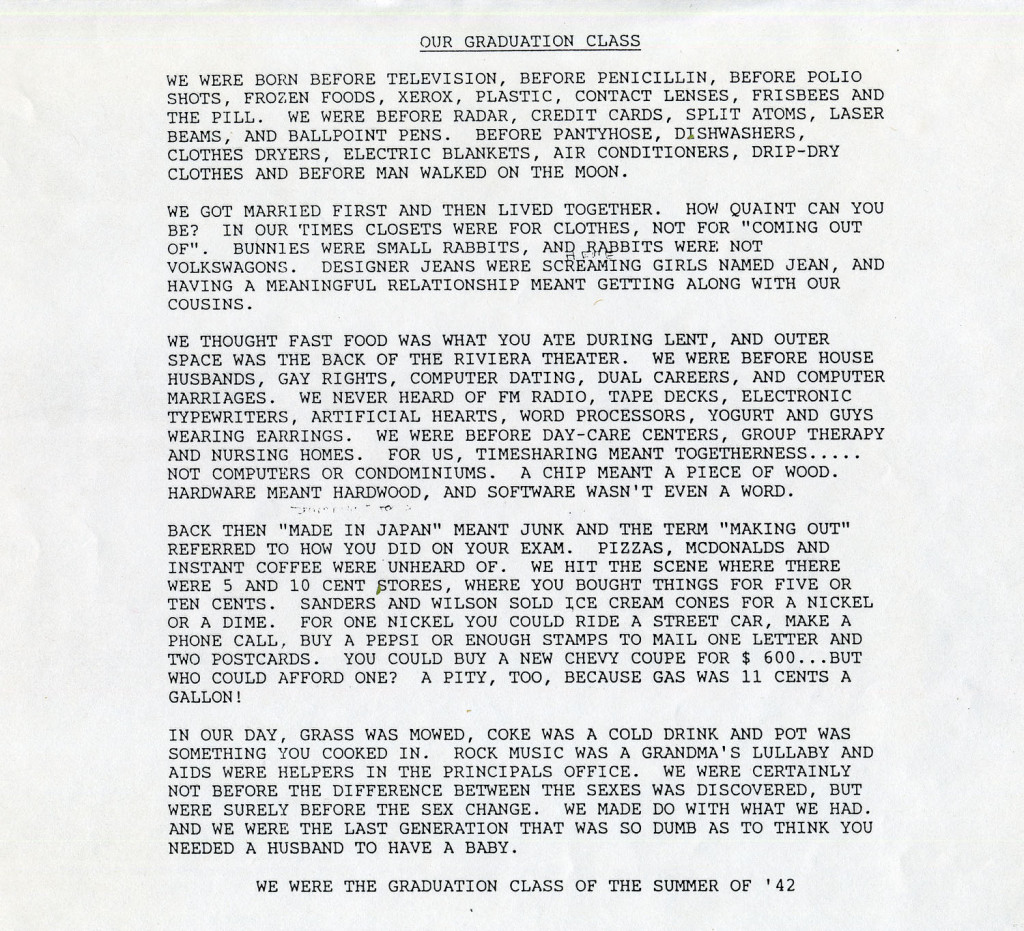Pine Mountain Settlement School
Series 13: EDUCATION
Series 19: STUDENTS
Community Cooperative School
1949-1972

On the “chinning” bar on playground. Series VII-52 Children & Classes. [elem_030.jpg]
TAGS: Community Cooperative School, Harlan County Board of Education, Mary Rogers, history of Harlan County schools, Boarding School years, Community School students, educational changes, PMSS trustees, Berea College, consolidation of schools
EDUCATION Community Cooperative School
1949-1972
The Community or Cooperative School, as it has come to be known, was an educational program quickly put together following the closure of the Boarding School in 1949. It was a cooperative program with the Harlan County Board of Education and it persisted in a variety of forms until 1972 when the educational program was moved from Pine Mountain to the new Green Hills Elementary School created by the Harlan County Board of Education to serve the valley’s K-12 population.
Mary Rogers, in her The Pine Mountain Story, describes the creation of the educational program:
Superficially the area on the north side of Pine Mountain changed little during the years 1930-1949. Now that there was a road over the mountain a few motor vehicles made their appearance in the thirties. Men were able to drive to work at distant logging camps, sawmills and mines. In the forties war’s demand for coal caused a boom in the coal industry. Miles of country roads were improved to carry coal from remote truck mines. Another road, a blacktop, crossed Pine Mountain eleven miles down the valley. Miners were receiving higher pay than ever before. Many skilled and unskilled workers were attracted by higher wages to leave the mountains. A number of the teaching force abandoned education for industry.
Reports on education in Harlan County at the end of the forties show that a high percentage of the children were not attending school at all, or that attendance was irregular. Prices for food and commodities, hence also for labor, had soared. It was hard to keep schoolhouses in repair. Listings show that many had no clean drinking water, or indoor toilets, and a few no facilities for washing hands. Many buildings had insufficient space and were fire hazards. Even more lacked adequate lighting and heating. Storage space, library books, lunchrooms, and playgrounds were generally absent. Some were staffed only intermittently and by emergency teachers who might have finished high school, but had no further training. The county was faced with a dilemma. Even if it could raise money to improve the school it was impossible to gauge population trends in the post-war slump. School buildings were rated “poor” or “fair” but opposite the name of the school in nearly every district was the entry “Decrease in population expected.” Would the school board be justified in spending public money on capital expenditure?
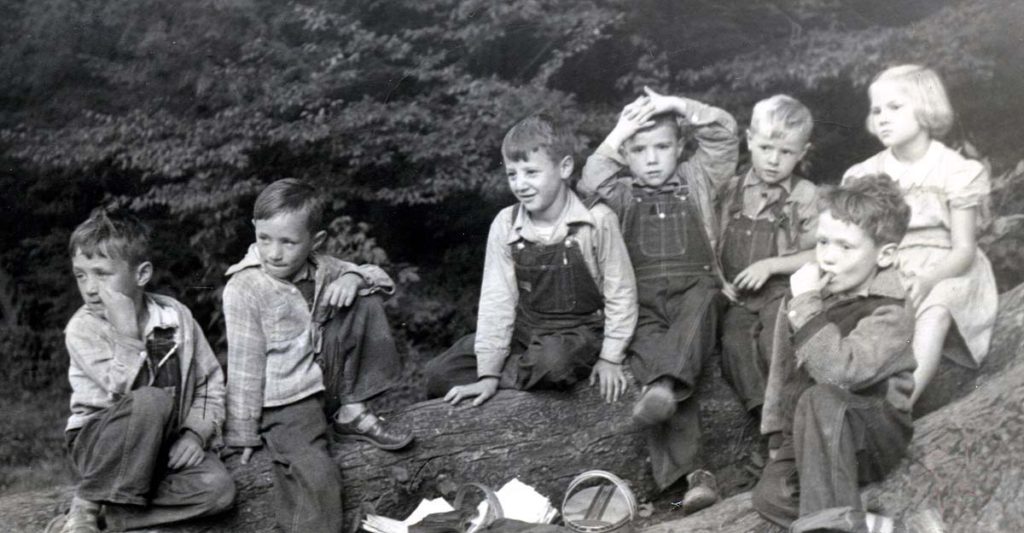
Series VII-52 Children & Classes. [elem_027.jpg]
Pine Mountain School was strongly impacted by the rising prices of goods and services, the departure of staff members for war jobs and the armed services, and an inability to replace staff at salaries the School could afford. The School was hit hard by these economic changes. Further, long-term Director Glyn Morris left to become an army chaplain and William D. Webb replaced him as Acting Director from 1942 to 1944, when H.R.S. Benjamin was appointed Director. With rising prices, rapid changes in the Director position and an unstable endowment fund to support the physical maintenance of the School, the future looked bleak.
DOWNTURNS
Given the economic and managerial stability. It was becoming impossible to maintain the educational standards the School had set for itself. It was ever clearer that the boarding high school model must change or close. Moreover, with more roads built through the coalfield after the war, there were fewer homes out of the reach of the county’s educational services. This was particularly true of access to transportation. Further, one reason for the continued existence of the boarding high school had lost validity. Mary Rogers’ reflection tells much about the mindset
At the suggestion of the Trustees, a key committee of the staff explored for a year “the basic function of Pine Mountain School in the light of a critical financial situation, and in the light of community or area needs.” It must be used “for school purposes as long as the Constitution of the United States stands, hoping it will make a bright and intelligent people after I’m dead and gone.” Uncle William Creech had laid down this policy with his original gift to the School. What service should now be undertaken to keep faith with this mandate? Should it be a trade school, a junior college? More and more the committee’s sight focused on the plight of the elementary grade schools, and the children growing up in the immediate area of Pine Mountain, where only one-fourth of the pupils were completing the eighth grade. Thus most of our neighboring children could not enter Pine Mountain High School will to serve centered on the county’s greatest need. The staff “Key Committee” reported to the Board, proposing the creation of a panel of eminent Kentucky educators to conduct a survey and make recommendations. This panel reported back to the Board in March, 1949, which then acted largely in the spirit of these recommendations. The Trustees took a step in faith that “new occasions teach new duties.” A new continuing Board of Trustees was elected to operate the Pine Mountain Settlement School as an independent institution affiliated with Berea College. No College funds would be used at Pine Mountain. It was urged that the health work should be retained, that community services should be maintained and expanded,…..
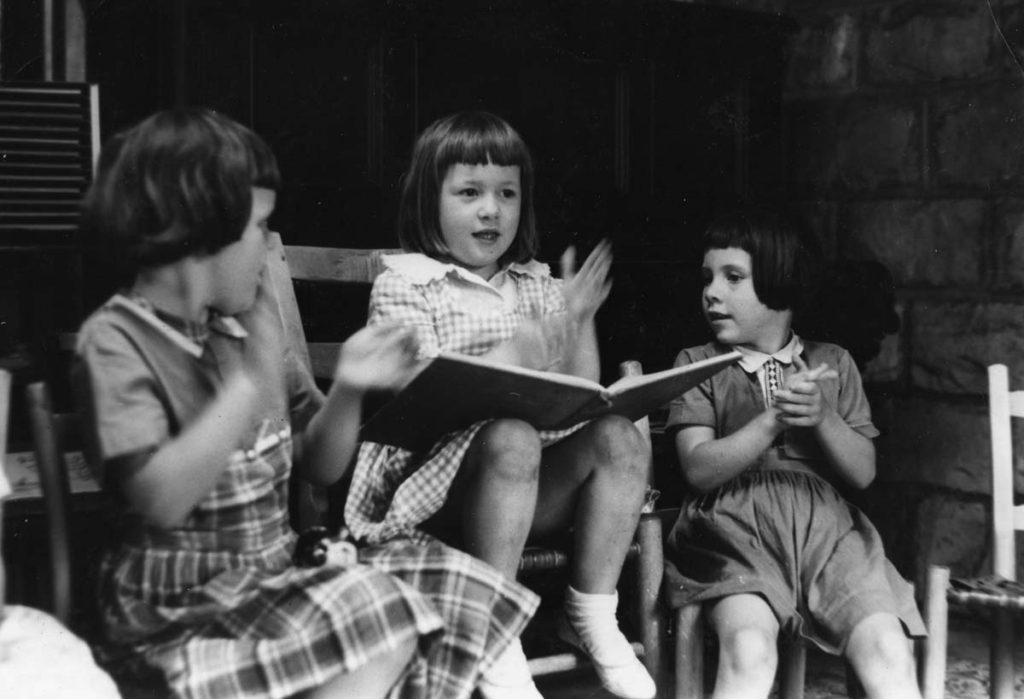
Three children sitting and clapping, the middle one with open book in lap. [52_life_work_046c.jpg]
EDUCATION Community Cooperative School: The Years Before
NOT written by a Pine Mountain student and not from the Community School years, this observation has joined the myriad of often-quoted pieces of trivia that appear on the internet and in the Op Ed sections of newspapers. The author is not known, but the sentiment certainly resonated with many individuals who looked back with nostalgia on the years from 1935 to 1945. An article in the Chronicle of Higher Education referred to this generation as the “Peculiar Generation,” caught between the “Greatest Generation” of the War years and the turbulence of the 1960s. But, no one seems to be able to identify a consistent theme in the behavior or persuasions of this generation.
At Pine Mountain, the classes from 1931 to 1949 were certainly a group of students who charted their own course and who looked with optimism on the future. The years these students spent at Pine Mountain are often referred to as the “Boarding School Years.” They are certainly some of the most dynamic years in the School’s long history. The career trajectory of these students was as varied as were the student origins. It can be said that whatever their life-course, the students who attended Pine Mountain Settlement School’s boarding school, lived it with earnest conviction and a solid set of values that is in striking contrast to the lives of many younger than they. But isn’t that always the reflection of those who follow ?
EDUCATION: Community Cooperative School
Did the new school produce a different kind of student? How did the careers of these “Community” students differ from those students who preceded them? What was their value system? What nostalgia do they hold and do they gather around themselves?
The Community School students did not board at the school. They came from the immediate cultural community and participated in a county-wide “public school” which was located at Pine Mountain Settlement. The evolution of this program is captured in February and the November NOTES from Pine Mountain Settlement School.
The February 1949 NOTES makes it clear that Pine Mountain was beginning to explore where the institution might be failing to acknowledge the recent changes that took place in the institution and the impact on education. The many changes in transportation, economics, and educational trends are briefly explored in the publication.
“Although we are still far from the well-beaten paths of civilization, we are constantly reminded that things are not as they were when Pine Mountain was founded 36 years ago. Even in a few years, we have seen changes in the economy of our local community. construction of roads is linking what were once remote spots. Even the new telephone in the school office is a symbol of this change. No one who sees the situation can feel the need for the school has passed. We are still almost twenty miles from the nearest county high school and a large percentage of our boarding students cannot easily reach schools from their homes. We have always tried to plan the program to fit the situation and are at present particularly concerned that we may be ministering to the changing needs about us. To this end we are thinking and discussing in the hope that we may develop more significant channels of service — especially in the life of the communities around us.”
By the summer of 1949 it was clear that the educational changes required at the School must be radical. The November 1949 NOTES explains the course of planned action to be taken by the school and the various rationales for the actions:
“For the first time since its founding thirty-six years ago, Pine Mountain Settlement School is operating without boarding students. They are missed in many ways; the quiet of the campus after the last school bus leaves; absence of student chapel services on Sunday; the passing of a student labor program which did so much to make our community life run smoothly. But Pine Mountain has not lost its vitality. One has only to step into the School-house on any school day to realize that!
The considerations leading to the change from a boarding high school to a consolidated elementary school were various. Trustees have been alarmed at the necessity for using capital funds to maintain a boarding school at present-day high costs. They felt too, that Pine Mountain had a definite responsibility toward the younger children of the immediate community. Several one-room county schools had three or four emergency teachers a year with long breaks between. Such teaching failed to prepare pupils for high school at Pine Mountain and few of the children close to us had enough interest in more schooling to come.
The Board asked three well-qualified men to survey our situation and give their recommendations. This committee was composed of Dr. William Jesse Baird, president of Morehead State College; Dr. E. Meece of the Department of Education of the University of Kentucky; and Dr. Howard Beers of the Department of Rural Sociology of the University of Kentucky. After studying their report the Board took action last April with the following results. Berea College was asked to sponsor our administration, leaving Pine Mountain to operate under its original articles of incorporation. Pine Mountain’s new Board of Trustees is composed of nine members of the Berea College Board. Berea does not assume any of the financial load. The budget must still be raised by Pine Mountain School. Five one-room county schools have been consolidated at Pine Mountain. The HarIan County Board of Education pays the five teachers and the bus drivers and furnishes buses to bring in the children. President Hutchins and members of the Berea staff have been of the greatest help during these days of reorganization, not only with suggestions and advice in their specialized fields, but in the locating of needed personnel. This is a year of pioneering but the zeal of the staff, the enthusiastic help of our Berea colleagues, and the heartening cooperation of the County school board and our neighbors give us great hope for the future of our work.”
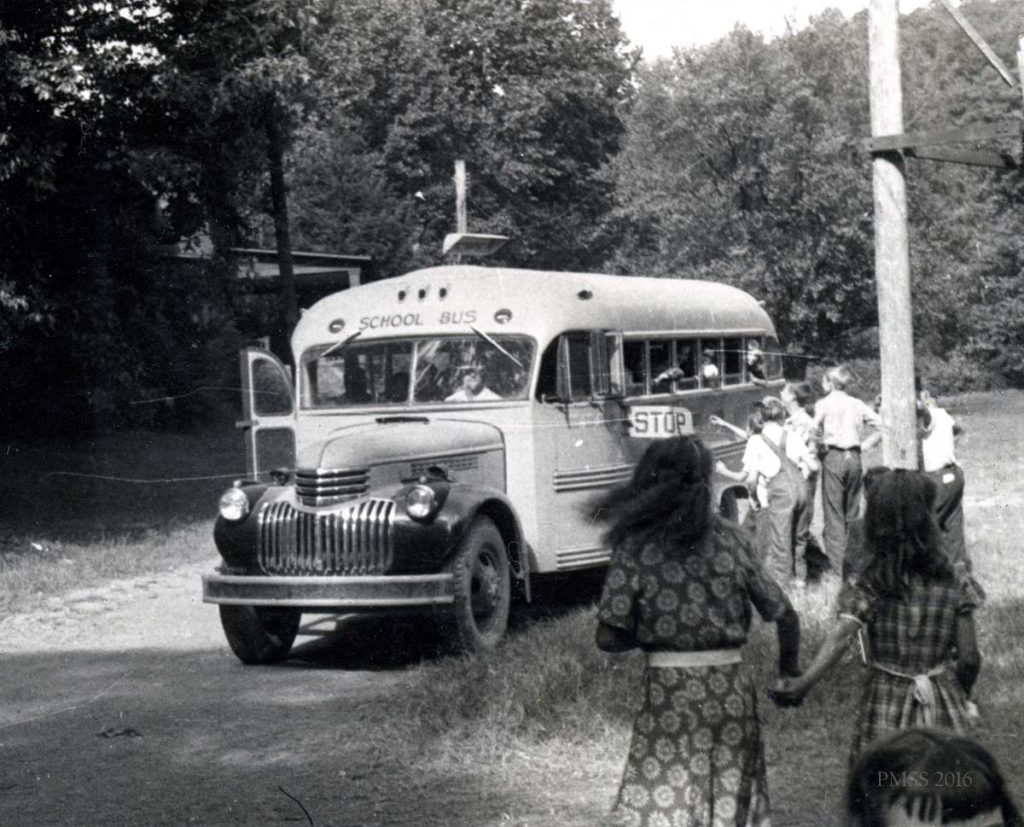
A group of children greeting the school bus. [elem_023.jpg]
A description of the adjusted program at Pine Mountain is given:
“There was tense expectancy at the Schoolhouse when on August 29th the Harlan County school buses rolled up with the first pupils for the consolidated school. By the end of the morning one hundred and eighty-six children, somewhat awed by the strangeness of their surroundings, had enrolled and the new consolidated elementary program was actually begun. Enrollment was far beyond expectations. There were nearly fifty more than last year attended the five schools which were consolidated. Divided among four teachers the classes numbered from forty to fifty-five. Over-crowding of our small classrooms became our most insistent problem.
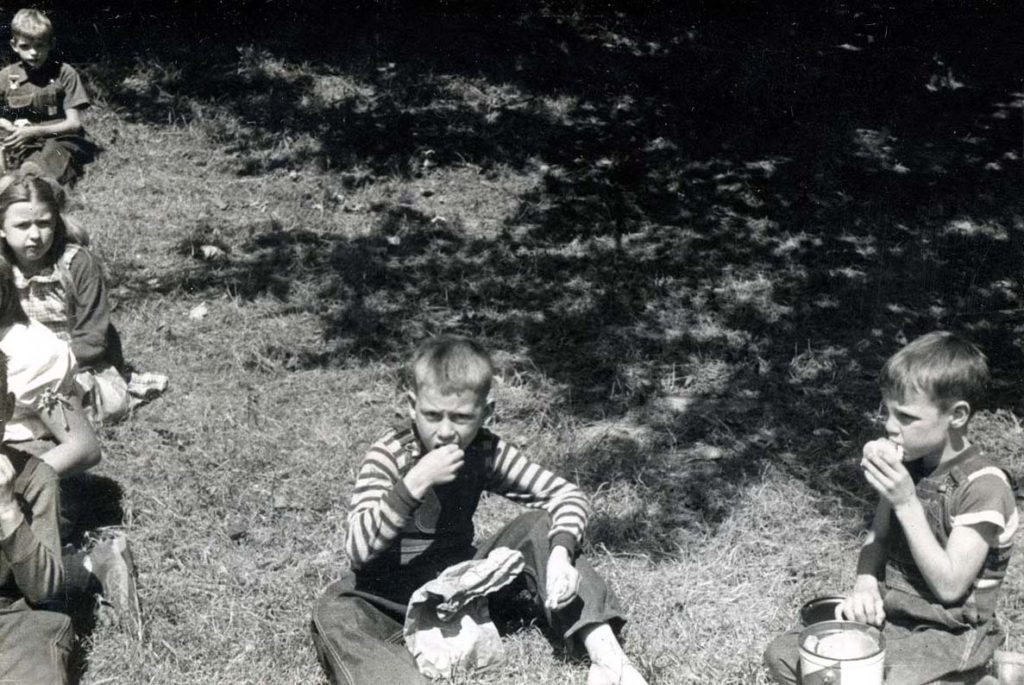
Several children eating while sitting on grass. [elem_001.jpg]
During the first sunny summer days, teachers and classes ate their lunches in pleasant fellowship on the lawns near the Schoolhouse. Lunches with their many wrappings brought up one of the first civic problems—the appearance of the school grounds. Each class was made responsible for one section of the grounds and children who threw things down without a second thought began to look about for trash cans. Indoors there were class-rooms and hallways to sweep and the desire to keep ‘our school’ clean and attractive grew as students took turns at these tasks.
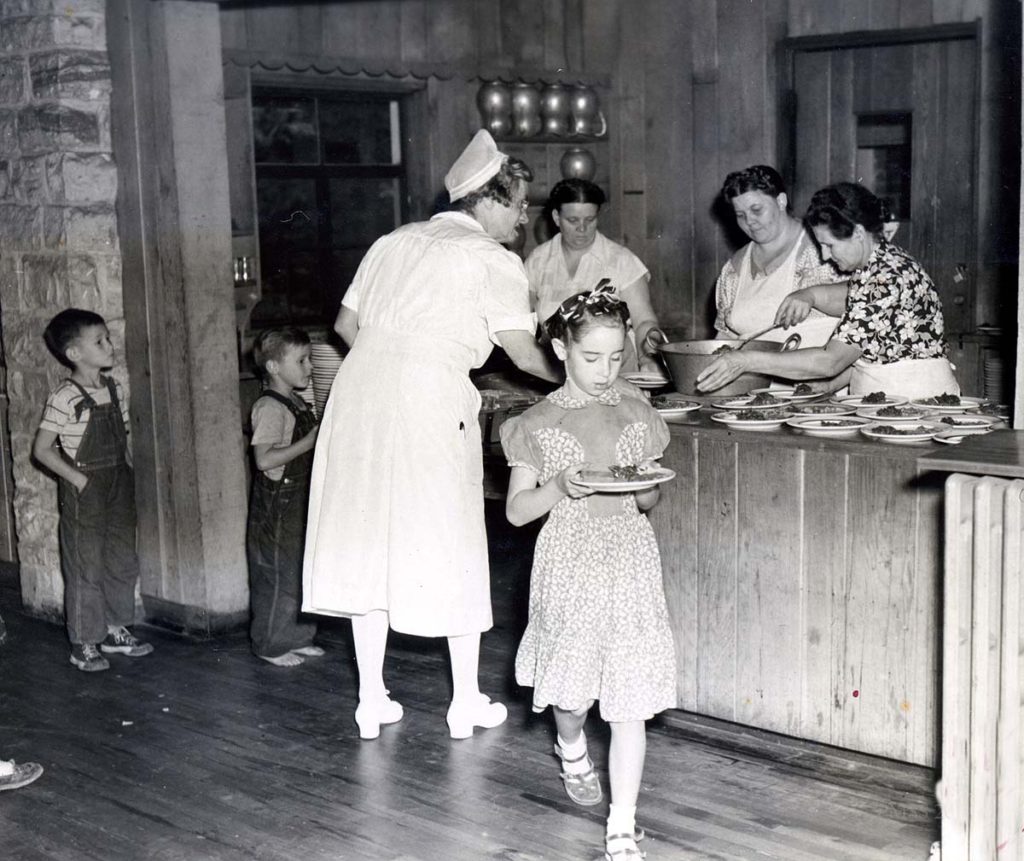
Children & Grace Rood, nurse, lined up for a hot lunch served by three women behind counter, Laurel House. [elem_026.jpg]
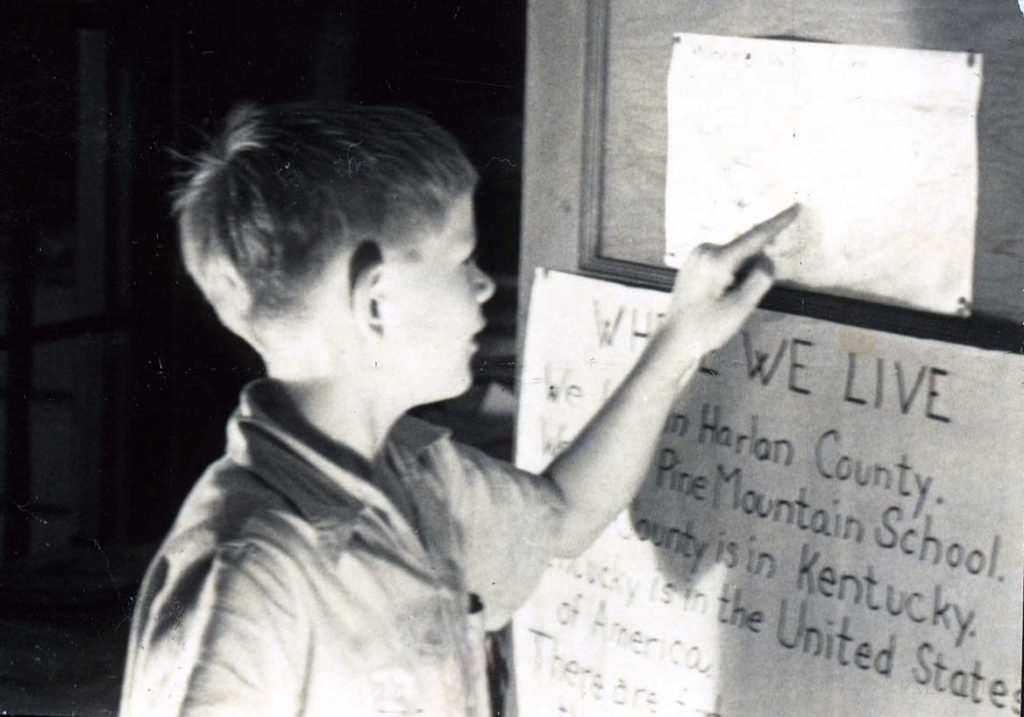
Young boy pointing to paper pinned to bulletin board. [elem_032.jpg]
A hot lunch program financed by the parents and government subsidy was soon organized. Teachers stress in their classroom teaching the importance of a balanced diet in an effort to attack poor eating habits. Weekly educational movies take the students to far places. Most children have not been farther than Harlan town, eighteen miles away. Younger ones were unsure of the name of their county —and even their state and nation. One wrote, ‘My state is Big Laurel, Kentucky.’ There was considerable confusion in the third grade whether Kentucky was in Harlan County ….
Through the sunny days of September and October enrollment increased and attendance held up well in spite of pulling fodder, grinding cane, and digging ‘taters—fall tasks which keep the big boys out of school. Even on rainy November days attendance has surprised us. Buses pick up many children right at their gates but getting to school is not so easy for all of them. Already a few have failed to appear after a heavy rain because they couldn’t get across the creek. Pupils living up Big Laurel and Little Laurel Creeks walk three or four miles to get to the bus. With winter weather and high water this may be impossible for all but the sturdiest.
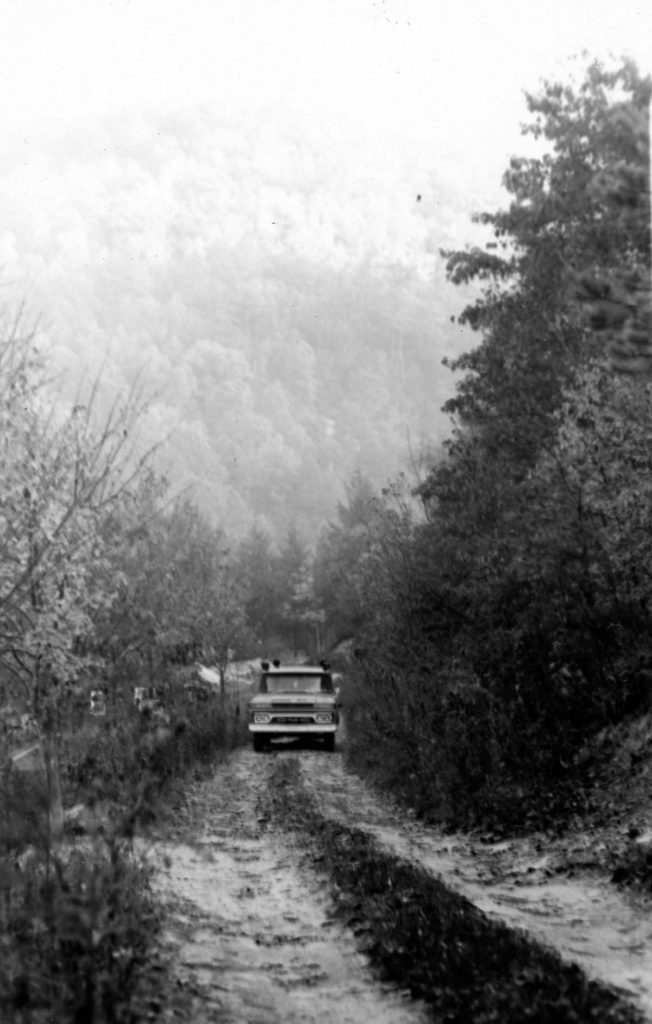
A truck in a muddy rutted dirt road. [52_life_work_055a-1.jpg]
The staff working together on the new school program are people with experience at Pine Mountain. Burton Rogers, formerly, teacher of social science, acts as principal. He is a person who has always sought ways in which the school could serve this community more effectively and he sees our present program as a big step forward. Miss Atha Stahl has first and second grades. She has taught the county school at Little Laurel with conspicuous success for several years. Miss Dorothy Nace, who teaches second and third grades, has been secretary at Pine Mountain for five years. Miss Gladys Hill, who teaches fifth and sixth grades, has taught at Pine Mountain for twenty years. It was she who organized the course in the study of cooperatives which received attention all over the country. Ronald Henderson has the junior high grades—seventh, eighth, and ninth. He has taught science at Pine Mountain for the past four years. The only teacher new to the community is Mrs. Golda Baker [Pensol], who came at the end of the second month to relieve the overcrowding. She comes from Rockcastle County where she has had experience in building up neglected rural schools. With crowded classrooms a serious national problem, we are fortunate that Harlan County was able to send us Mrs. Baker.
The challenge of our new program is two-fold. Taking children from schools which suffered from poorly trained, inexperienced teachers, we find them behind their grade level in reading and other basic skills. Many are lacking too, in the group feeling which is essential to a successful school, but in both these areas progress is already evident. We still believe in the importance of training the hand as well as the mind. The first step in this direction has been the organization of a 4-H Club for older students. Under the supervision of the county agent, volunteer leaders will offer training in sewing, canning, agriculture, forestry, and woodwork.
It is unthinkable that a school so rich in traditions should fail to continue some of its seasonal celebrations. The third and fourth graders prepared a simple program in memory of William and Sally Creech at the time of Uncle William’s birthday. ln preparation the children read the history of the Creeches and the early history of Pine Mountain school, visited the tiny log house which is now the school museum, and invited Henry Creech, one of Uncle William’s sons, to tell them from his own memory of the earlier days in this valley.
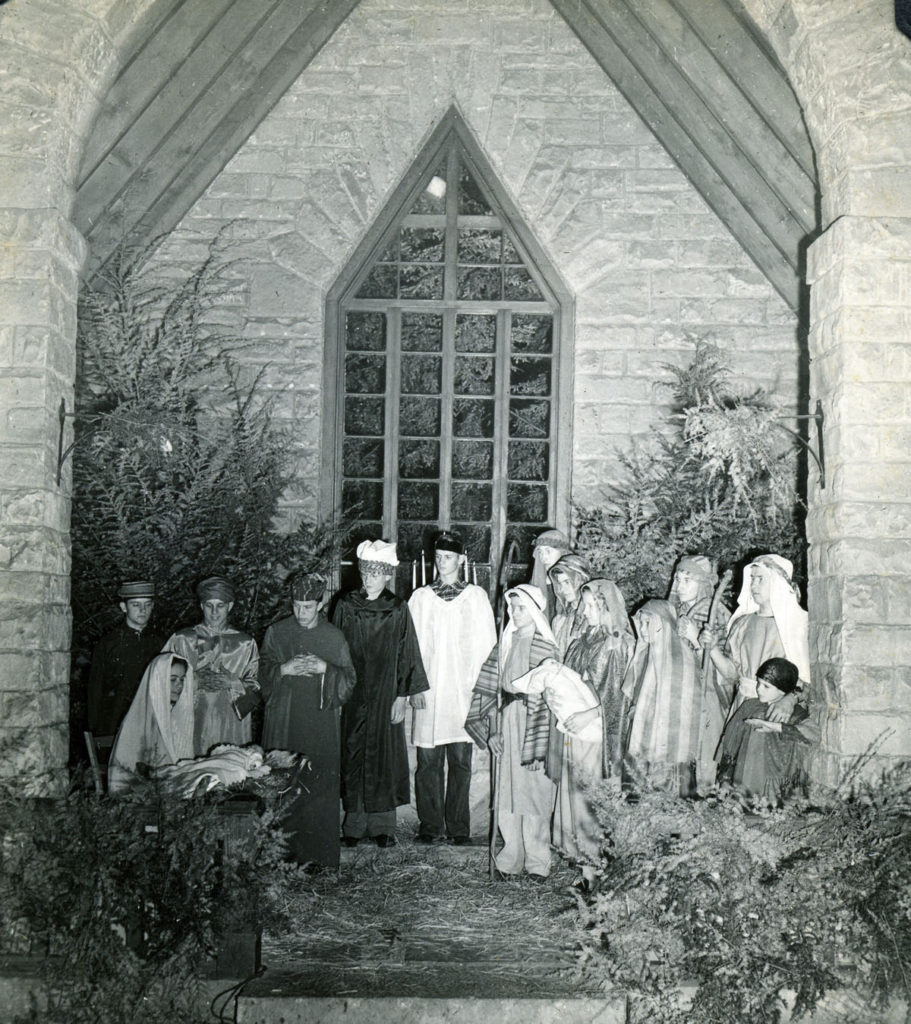
Nativity Play in the Pine Mountain Settlement School Chapel. [rood_071x.jpg]
Even those pupils who have not had an older brother or sister at Pine Mountain have heard of the Nativity play. ‘Will you fellers have that ‘ere Christmas Play in the church-house?’ One asked. His teacher pointed out that it would be up to the students if they wanted to do it. Several standing near stressed their readiness to take part. A Nativity play in the chapel will be an important part of the Christmas celebration. Our children’s eagerness to enjoy what former Pine Mountain students have had indicates a fertile soil for the planting of rich traditions adapted from old customs and created out of new needs.”
While the transition to a “Community School” seemed sudden, there were many signals that the School needed to assess their services to the community. Educational needs and medical needs still remained the highest needs of the surrounding community. Today the needs are not much different, with several exceptions. The need for local employment is a significant need following the downturn in the coal industry and the mechanization of mineral extraction. The need for drug intervention has continued its rise over the last three decades and in some areas has reached a critical level. These needs and many others are not just Appalachian needs. They are needs that are scattered throughout the nation.
Humorous, but trivial, the anonymous “blog” that cataloged the changes in generations also emphasized the enormous distraction that media has brought to the educational process. What value system are we giving today’s youth in today’s school? How does the school in the Pine Mountain valley today carry forward the values of 100 years but grow to meet the challenges of the 21st century? We all have an investment in the answers.
SEE ALSO:
BOARDING SCHOOL Students Guide 1929-1949 – Flat List
COMMUNITY SCHOOL Student List A-Ga, 1949-1968
COMMUNITY SCHOOL Student List Gi-Z, 1949-1968
EDUCATION Little School 1963
EE ENVIRONMENTAL EDUCATION
THE PINE MOUNTAIN STORY 1930-1980 Guide
PUBLICATIONS – PMSS Pine Mountain Ears
RURAL YOUTH GUIDANCE INSTITUTE
GUIDE TO RURAL YOUTH GUIDANCE INSTITUTES By Year
Series 13: EDUCATION (Private)
VII 52 – LIFE WORK CHILDREN & CLASSES PART I Photographs
VII 52 – LIFE WORK CHILDREN & CLASSES PART II Photographs

